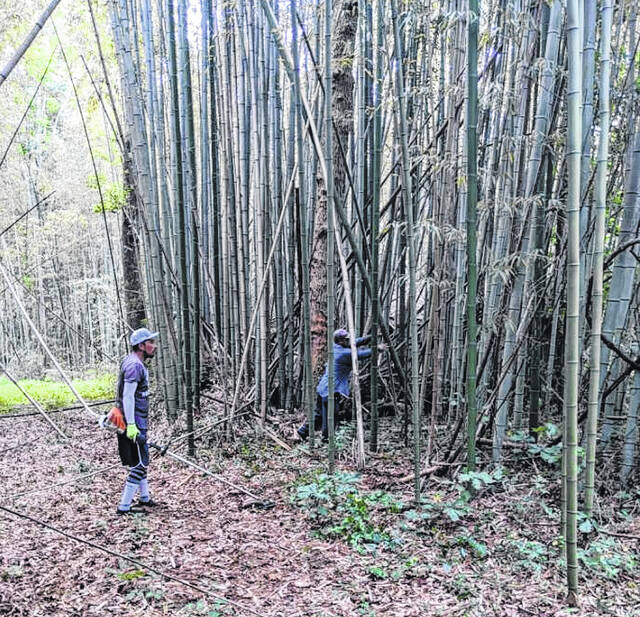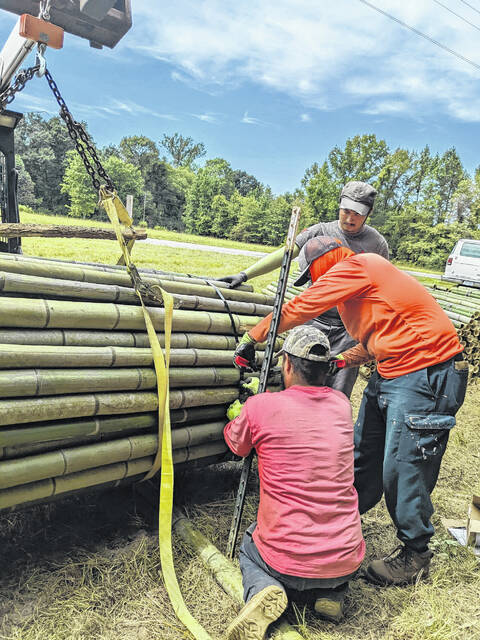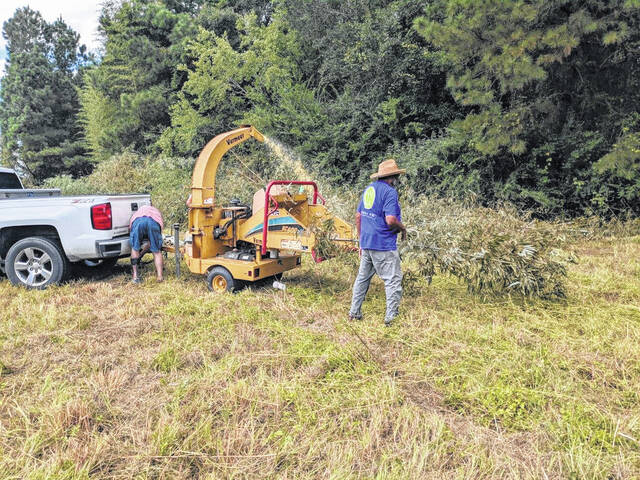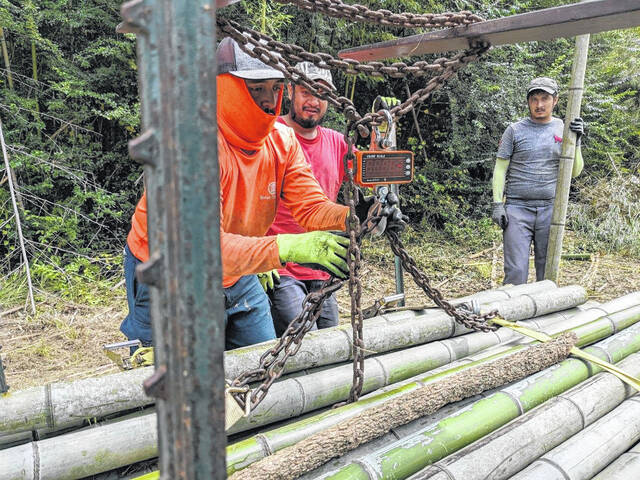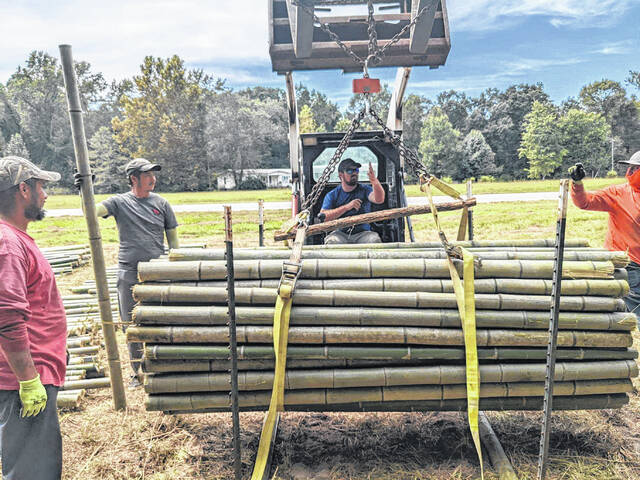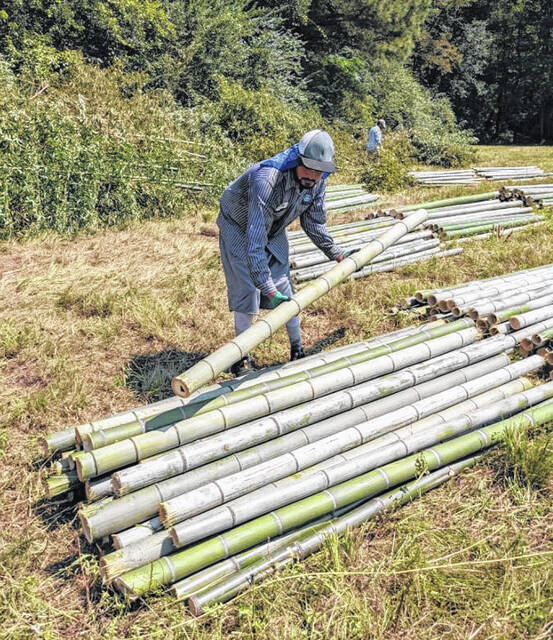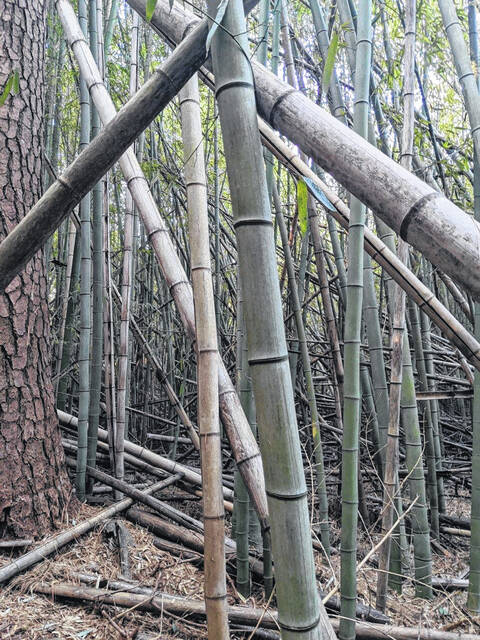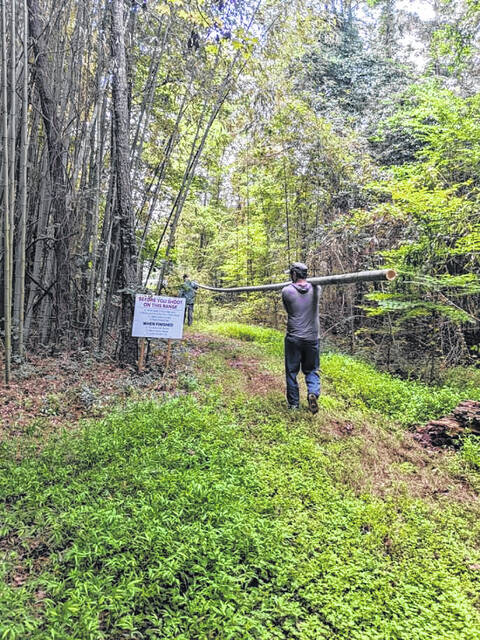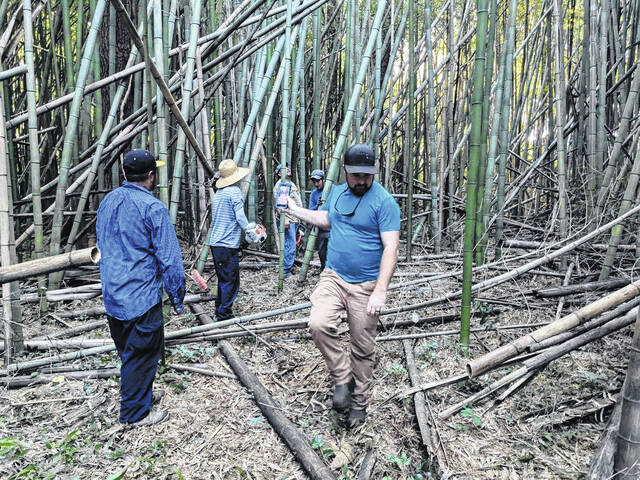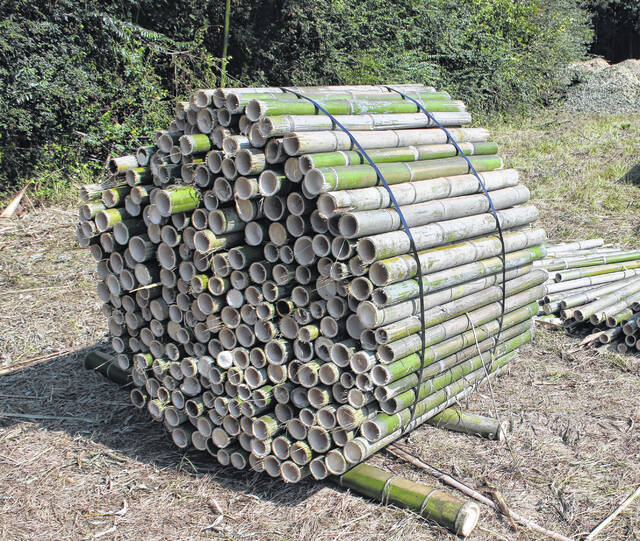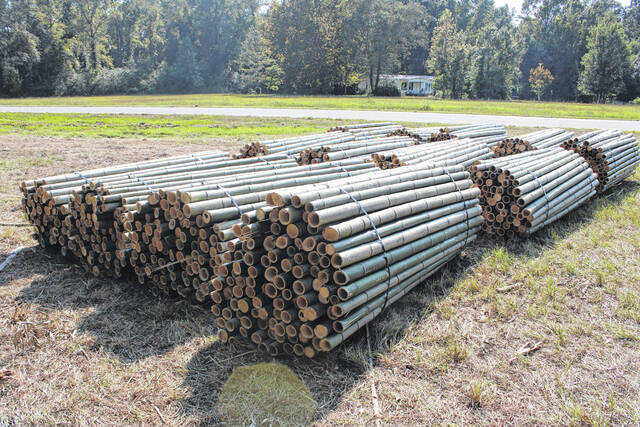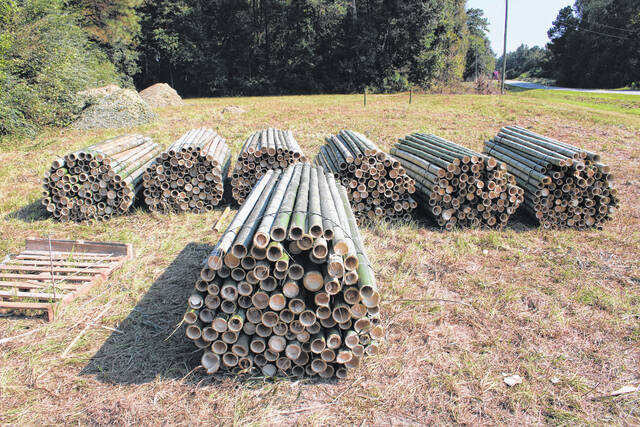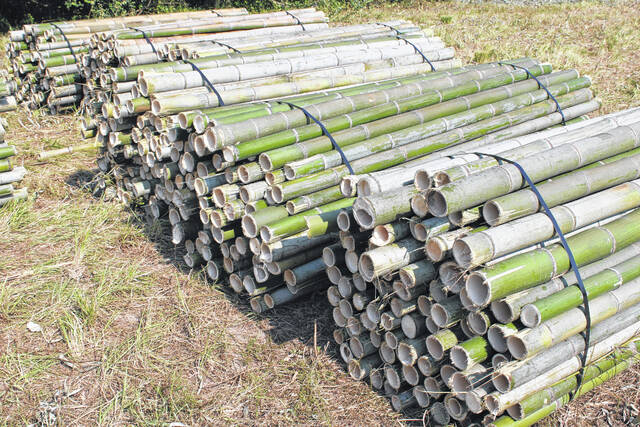
Tons of rolls of bamboo were stacked like this following the conclusion of the initial timber test harvest by OnlyMOSO.
Michael B. Hardison | Sampson Independent
Project data could prove boon to growers
The groundwork for a new chapter in agriculture was recently started in Sampson County following an initial test run of a timber harvest for locally-grown bamboo.
The harvest was conducted thanks to a group effort from local farmers and bamboo industry leaders OnlyMOSO USA. The purpose of the test harvest was to gather data on the bamboo that grows in and around Sampson County in hopes of expanding bamboo harvesting into a regularly-grown crop.
Marc Shollenberger, OnlyMOSO’s Field Support Specialist and Director of Field Support Division, was on location during this process. He’d share a deeper dive into the particulars of this project and what they’re hoping to achieve.
“For this particular venture we’re doing a test run of a timber harvest,” he said. “We’re in the process, both of developing our farm fields and utilizing the wild fields to do some of our initial test harvest. We want to get that hard data, get the teams trained and learn what we can before we get to it with our farm fields.”
“Another thing we’re going to be working on with one of the landowners is to not only take this land from being just a wild field, but to be almost like a farm field where it’s managed and taken care of,” Shollenberger said. “With that we’ll expect to get potentially food product out of this field this coming season and then maybe timber at the end of next year as well.”
To gain that data, OnlyMOSO was contracted to harvest tons of bamboo in local areas around North Carolina and surrounding states. One of the two locations they harvested in Sampson County was on Delway Highway and in that area alone Shollenberger said they were able to collect over 10 tons.
“The group that we contracted with was looking for a 20 ton test harvest and with the idea of looking to do around 100,000 tons in the near future,” Shollenberger said. “They needed test material so they came to us because we are the leaders in the bamboo world and we made it happen.”
“We got 15 to 14 and a half tons from the two fields here in Sampson County and then there was four and a half tons pulled out Alabama — that was another species, so it’s all gone great.”
Shollenberger also noted that even he was surprised at just how much great quality bamboo was growing in Sampson County. He also mention how much they enjoyed working with the locals to complete this project.
“This project, especially the test harvest up here was amazing,” Shollenberger said. “There’s a lot more material at the right size than we anticipated, both in this field and the other small field that we’ve been cutting out of. Size, grade and quality it’s been awesome. We also ended up getting local guys to help us with the project and that crew worked out great.”
“There’s actually quite a bit and we’ve been surprised,” he added. “A lot of times you’ll see it on the roadside where it looks like there’s a few small things then you come in farther, and there’s actual sizable, usable material. So needless to say, we were happy with both locations and pleasantly surprised that there was more than we anticipated.”
OnlyMOSO’s East Coast Territory Manager Robert Steverson was also on locale and stressed just how important establishing common bamboo harvesting practices can be.
“Farming bamboo, under our program right now, if you wanted to plant an acre of bamboo you’d spend $20,000 and you guys have got it growing all around,” he said. “With a section of land like the one here a grower could make 10 to $20,000 a year, every year.”
“Now imagine if you had a 100 acres and 10 tons of bamboo is $100,000 and 20 tons in $200,000, lets just say we’ve got to get smarter.”
“Our farming processes pretty much say plant, fertilizer, water, herbicide, pesticide, harvest, get a check and then next Spring do that again,” he said. “Say you forgot to cut it down, then you have to clean it up and all those inputs are expenses. But, with bamboo you’ve only got to plant this sucker one time and then you can harvest it for the next 80 years.”
“Then if you come back out here next April then just walk around and look at the ground, what will you see,” he added. “Bamboo shoots the same size as what we’re cutting out of here are going to be popping up so bamboo is also regenerative, renewable and green.”
Steverson also mentioned that bamboo is used for a plethora of other avenues from clothing, to construction, medicine, food and list proceeds. Another of it’s most useful aspects that he wanted farmers to know about is it’s absorption on carbon dioxide.
“This little plant absorbs carbon dioxide out of the atmosphere five times greater than any other plant on the planet,” he said. “You’ve got this thing called global warming. What causes that? Carbon in atmosphere. Need something that’ll scrub the atmosphere and suck it out? Plant bamboo. Oh and by the way you’ll get paid money for it.”
“There’s something called carbon credits, for every pound of carbon you can scrub out of the atmosphere you get paid,” Steverson said. “Say because this guy over here with dirty plants is putting it in atmosphere, he’s got to pay taxes that turns into credit. So I give it to a guy to scrub it.”
“So how many revenue streams do you have on a piece of dirt with bamboo,” he said. “I’ve got bamboo shoots that I can eaten and harvest, I’ve got timber I can cut and harvest and now I’ve got carbon credit, three ways to get paid. These are just a few of what you can do with bamboo.”
Steverson also pointed out their reason for wanting to share the story about their projects which they’ve been keeping on the low until now.
“You have a story here that very few people have a clue about and that it’s happening, not only right here but throughout the Southeast,” Steverson said. “Most people don’t know about how important and beneficial bamboo really is.”
“We’ve been kind of downplaying it, but because of this project and its significance we wanted to get the word out,” he added. “We’ve been doing so much here and we want to talk about and share all we’re doing.”
For more information on OnlyMOSO’s and all they’re involved in visit www.onlymoso.com/welcome/
Reach Michael B. Hardison at 910-249-4231. Follow us on Twitter at @SamsponInd, like us on Facebook, and check out our Instagram at @thesampsonindependent.

